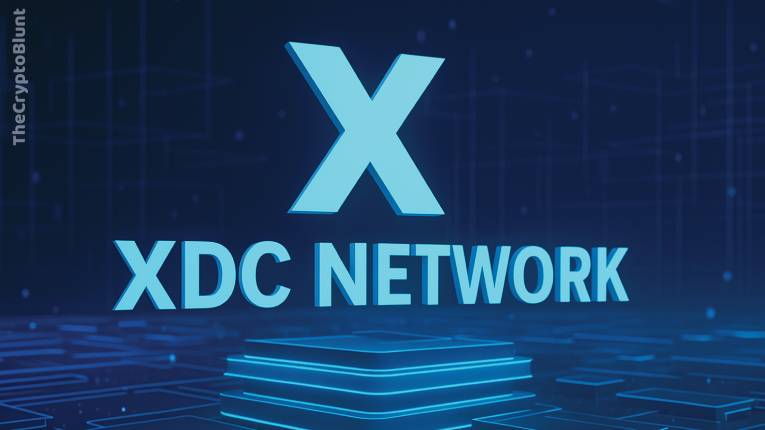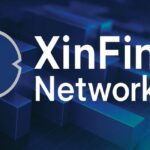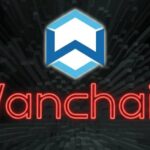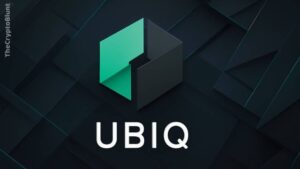This is precisely where the XDC Network, developed by XinFin, comes into play. It’s not just another blockchain; it’s a pioneering hybrid blockchain platform designed to bridge the gap between the public, transparent world of decentralized finance (DeFi) and the private, regulated realm of traditional finance (TradFi) and enterprise solutions, particularly in the complex domain of global trade and finance. Think of it as a smart city that seamlessly integrates public parks with private business districts, allowing for both open interaction and secure, confidential operations.
This article will comprehensively explain what the XDC Network (XinFin Digital Contract) is, how its unique hybrid ecosystem works, and why its native cryptocurrency, XDC, is so crucial. We’ll demystify the core concepts, address common misconceptions about hybrid blockchains and crypto in general, highlight its real-world applications in solving tangible problems, and offer a beginner’s perspective on how you can safely explore and engage with this innovative network. Our goal is to provide a clear, no-nonsense introduction, empowering you to understand XDC Network’s significant potential in shaping the future of global commerce.
The Foundational Pillars: Re-visiting Core Blockchain Concepts
To truly grasp the innovation behind the XDC Network, let’s establish a firm understanding of the fundamental concepts that underpin all blockchain technology. XDC builds upon these principles while introducing its unique hybrid approach.
1. Cryptocurrency: Digital Value for a Digital Age
A cryptocurrency is a digital or virtual currency that employs cryptography for security. Unlike traditional money issued by central banks, cryptocurrencies operate on decentralized networks. This means no single government or institution controls them. Their value is primarily determined by market supply and demand, and they can be transferred directly between individuals without intermediaries.
XDC (XinFin Digital Contract): The Fuel of the Network
The native utility token of the XDC Network is XDC. It’s the lifeblood of the ecosystem, playing multiple crucial roles:
- Transaction Fees (Gas): Every operation on the XDC Network, from sending tokens to executing smart contracts, requires a small fee paid in XDC. These “gas” fees are notably low on the XDC Network, making micro-transactions and frequent interactions economically viable.
- Staking for Security: XDC holders can “stake” their tokens to support the network’s security and validate transactions. This participation is integral to its consensus mechanism.
- Governance: XDC holders can participate in the network’s governance, voting on important decisions and upgrades, fostering a truly decentralized community.
- Collateral and Liquidity: XDC can be used as collateral in decentralized finance (DeFi) applications built on the network and contributes to liquidity pools on decentralized exchanges.
2. Blockchain: The Unbreakable Digital Record
Imagine a shared, continuously growing digital record book, publicly accessible and maintained by a network of computers. Every new entry, known as a block of transactions, is cryptographically linked to the previous one, forming an unbroken chain. This is a blockchain.
- Decentralized and Distributed: Thousands of independent computers, called nodes or validators, across the globe collaboratively maintain and verify the blockchain. This distributed nature eliminates single points of failure, making it incredibly resilient and resistant to censorship or manipulation.
- Immutability: Once a transaction or data record is added to the blockchain and confirmed by the network, it is virtually impossible to alter or delete it. This unchangeable record provides unprecedented trust and auditability.
- Transparency: On public blockchains, all transactions are publicly visible (though addresses are pseudonymous) and auditable using blockchain explorers. This openness fosters trust.
3. Decentralization: Power to the People (and the Network)
Decentralization is the core philosophy. It means distributing control and decision-making away from a single, central authority (like a bank or government) to a network of many independent participants. This ensures:
- No Single Point of Failure: The network can continue to operate even if some participants go offline.
- Censorship Resistance: No single entity can arbitrarily block transactions or shut down the network.
- Trust Through Code: Participants trust the transparent, verifiable rules embedded directly in the blockchain’s code, rather than relying on an intermediary.
4. Smart Contracts: Automated Agreements
Smart contracts are self-executing agreements with the terms directly written into lines of code. They run on a blockchain and automatically execute when predefined conditions are met. This automates processes, removes the need for intermediaries (like lawyers for simple agreements), and forms the backbone of decentralized applications (dApps) and complex financial protocols. The XDC Network is fully EVM (Ethereum Virtual Machine) compatible, meaning developers familiar with Ethereum can easily build and deploy their smart contracts on XDC.
5. Consensus Mechanism: XDPoS (XinFin Delegated Proof of Stake)
How do all the independent computers in a decentralized network agree on the correct order of transactions and the valid state of the blockchain? They use a consensus mechanism. The XDC Network employs a highly efficient and environmentally friendly mechanism called XDPoS (XinFin Delegated Proof of Stake).
- Delegated Proof of Stake (DPoS): Unlike Proof of Work (like Bitcoin’s mining, which consumes vast amounts of energy), DPoS is much more energy-efficient. In XDPoS:
- Delegates/Masternodes: XDC holders “vote” or “delegate” their XDC tokens to a limited number of elected validators, known as Masternodes. These Masternodes are responsible for verifying transactions, creating new blocks, and securing the network.
- Faster Transactions & Lower Fees: This system allows for significantly faster transaction processing (XDC Network boasts 2-second block finality) and near-zero transaction fees, making it highly scalable for enterprise-grade applications.
- Security & Participation: Masternodes are incentivized with XDC rewards for their honest participation, and XDC holders who delegate their tokens also earn a share of these rewards, promoting wider community involvement and network security.
- Energy Efficiency: Compared to energy-intensive Proof of Work, XDPoS drastically reduces energy consumption, making XDC Network a more sustainable blockchain.
Consider adding an infographic here: “XDC Network Fundamentals.” Visually represent XDC token as fuel, a simplified blockchain ledger, and the XDPoS mechanism showing XDC holders delegating to Masternodes who validate blocks.
What is a Hybrid Blockchain? The XDC Network’s Unique Approach
The core innovation of the XDC Network lies in its hybrid blockchain architecture. This concept arose from the recognition that neither purely public nor purely private blockchains could fully address the diverse needs of modern global trade and finance.
The Limitations of Pure Public and Private Blockchains
- Public Blockchains (e.g., Bitcoin, Ethereum):
- Pros: Highly decentralized, transparent, censorship-resistant, open to everyone.
- Cons: Can be slow and expensive (scalability issues), lack transaction privacy (all data is public), and may not meet the stringent regulatory and data privacy requirements of enterprises.
- Private Blockchains (Permissioned Blockchains):
- Pros: High speed, low cost, full transaction privacy, granular control over participants (only approved entities can join), suitable for internal enterprise use.
- Cons: Centralized (controlled by a single entity or a small consortium), less transparent, lower censorship resistance, limited interoperability with public networks.
XDC Network’s Hybrid Solution: Best of Both Worlds
The XDC Network (XinFin Digital Contract) elegantly combines the strengths of both public and private blockchains, creating a truly versatile and enterprise-ready platform.
- Public and Private State (Consortium Model):
- XDC Network operates as a consortium blockchain with a public state. This means the core blockchain itself is public and transparent, allowing for open verification of transactions and smart contract code.
- However, it allows for the creation of private subnetworks or channels where sensitive data can be exchanged confidentially between permissioned parties.
- Think of it like this: the fact that a trade finance transaction occurred and was settled is publicly recorded on the XDC mainnet (for transparency and auditability), but the sensitive commercial details (e.g., specific pricing, customer identities) can be exchanged privately between the involved banks and companies off-chain or on a private layer linked to the public chain.
- Interoperability:
- The hybrid nature allows for seamless interoperability. The XDC Network is designed to communicate with both public blockchains (like Ethereum) and traditional financial systems.
- It supports hybrid relay bridges, facilitating the transfer of assets and data between public and private networks.
- Compliance and Regulation:
- A significant focus of XDC Network is on compliance. It’s built to adhere to global financial messaging standards like ISO 20022. This is crucial for integrating with traditional banking systems and enabling compliant, institutional-grade solutions.
- The network is designed to support Know Your Customer (KYC) and Anti-Money Laundering (AML) measures, which are paramount for financial institutions dealing with real-world assets and regulated transactions. This is often achieved through permissioned access to certain private transaction details or through integrated identity solutions.
- Programmability (EVM Compatibility):
- Being EVM-compatible, XDC Network allows developers to easily deploy smart contracts and decentralized applications (dApps) that were originally built for Ethereum, with minimal modifications. This significantly lowers the barrier to entry for developers and fosters a vibrant ecosystem.
The hybrid architecture of XDC Network is not just a theoretical concept; it’s a practical solution to the complex demands of global trade, supply chain management, and cross-border finance, where the need for both transparency and privacy co-exists.
Consider adding an infographic here: “XDC Network: The Hybrid Advantage.” Visually represent a central public blockchain (XDC) with private channels branching off, illustrating how data can be public or private depending on the use case. Emphasize “Transparency + Privacy.”
The XDC Ecosystem: Revolutionizing Global Trade & Finance
The XDC Network’s ecosystem is built with a singular focus: to modernize and optimize the multi-trillion dollar global trade and finance industry. It aims to solve long-standing problems that have plagued this sector for decades, ultimately leading to faster, cheaper, and more transparent transactions.
1. The Problem: Inefficiencies in Global Trade Finance
Traditional global trade and finance processes are notoriously complex, inefficient, and opaque. These challenges include:
- Lengthy Settlement Times: Cross-border payments and trade finance transactions can take days or even weeks to settle, tying up capital and delaying business operations.
- High Costs: Multiple intermediaries, complex documentation, and manual processes lead to high transaction fees and operational costs.
- Lack of Transparency: Opaque supply chains and financial flows make it difficult to track goods, verify documents, and identify potential fraud.
- Limited Access to Finance: Small and Medium-sized Enterprises (SMEs) often struggle to access trade finance due to stringent requirements and a lack of transparency for lenders.
- Paper-Based Processes: The reliance on physical documents (Bills of Lading, Letters of Credit, invoices) is slow, prone to errors, and difficult to manage globally.
- Fraud and Disputes: The lack of immutable records and verifiable data can lead to disputes and opportunities for fraud.
2. XDC Network’s Solutions: Blockchain for Real-World Problems
The XDC Network directly addresses these pain points through its hybrid blockchain capabilities and focus on enterprise-grade solutions:
- Instant Cross-Border Payments & Settlements:
- Solution: XDC Network’s XDPoS consensus mechanism enables 2-second transaction finality and near-zero gas fees. This allows for near-instantaneous cross-border payments and settlement of trade finance instruments.
- Impact: Reduces capital lock-up, accelerates business cycles, and lowers costs for international transactions.
- Tokenization of Real-World Assets (RWAs) and Trade Instruments:
- Solution: XDC Network’s EVM compatibility and robust smart contract capabilities allow for the tokenization of various real-world assets, including invoices, letters of credit, bonds, and even commodities. These digital representations (tokens) can then be easily transferred, financed, or used as collateral on the blockchain.
- Impact: Unlocks liquidity for illiquid assets, makes trade finance more accessible (especially for SMEs), and creates new investment opportunities.
- Decentralized Trade Finance (TradeFinex):
- Solution: One of the flagship platforms built on XDC Network is TradeFinex.org. This peer-to-peer (P2P) trade finance platform enables buyers and sellers to originate, finance, and settle trade transactions using smart contracts on the XDC blockchain.
- Impact: Reduces reliance on traditional banks as intermediaries, makes financing more efficient, transparent, and potentially cheaper by connecting originators directly with funders.
- Supply Chain Management and Traceability:
- Solution: The hybrid nature of XDC Network allows businesses to record key milestones and verifiable data points in a supply chain on the public chain while keeping sensitive commercial details private. Smart contracts can automate supply chain processes, from order placement to delivery confirmation.
- Impact: Enhances transparency, reduces fraud, improves efficiency in logistics, and enables better tracking of goods from origin to destination.
- ISO 20022 Compatibility:
- Solution: XDC Network is built with compliance in mind, adhering to ISO 20022, a global standard for electronic financial messaging. This ensures seamless interoperability with traditional financial institutions and their existing infrastructure.
- Impact: Facilitates easier integration with banks, payment systems, and regulatory bodies, accelerating institutional adoption of blockchain technology for finance.
- Legal Enforceability and Digital Identity:
- Solution: XinFin actively works with legal frameworks like the UNCITRAL Model Law on Electronic Transferable Records (MLETR) to ensure that digital trade documents and blockchain-based transactions on the XDC Network are legally recognized and enforceable. The network also supports robust digital identity solutions.
- Impact: Provides the necessary legal certainty and trust for businesses to transition from paper-based to fully digital trade processes.
3. Key Ecosystem Projects and Partnerships
The strength of the XDC Network lies not just in its technology but also in its growing ecosystem of dApps, enterprises, and strategic partnerships. Notable examples include:
- TradeFinex: As mentioned, the leading platform for trade finance on XDC.
- TFD Initiative: XDC Network was the first blockchain to join the Global Trade Finance Distribution Initiative, a consortium of major financial institutions.
- SBI Holdings: A strategic partnership aimed at enhancing transparency and automation in trade finance.
- Deutsche Telekom: Partnered with XDC Network as an infrastructure provider to enhance real-world asset tokenization capabilities.
- Propine: Singapore’s first licensed digital asset custodian, partnered with XDC for secure custody solutions.
- StorX: A decentralized cloud storage network built on XDC, offering secure data storage.
- ComTech Gold: Transforming gold tokenization on the XDC Network.
- Various DeFi & RWA Projects: A growing number of dApps for lending, borrowing, and real-world asset tokenization are emerging on XDC.
Consider adding an infographic here: “XDC Network: Solving Global Trade Pain Points.” Show specific problems (e.g., Slow Payments, High Costs, Lack of Transparency) and how XDC’s features (2-sec finality, low fees, tokenization, ISO 20022) address them.
Common Misconceptions: Debunking Myths about XDC Network and Hybrid Blockchains
The world of crypto is rife with misconceptions, and a sophisticated solution like XDC Network, with its hybrid nature and enterprise focus, often faces its own set of misunderstandings. As someone who has spent time understanding these nuances, I can assure you that clarifying these points is crucial for a deeper understanding.
- “XDC Network is a private, centralized blockchain controlled by XinFin/XDC Foundation.”
- Reality: This is a key misconception stemming from its “hybrid” and “enterprise-ready” labels. While XDC Network caters to enterprises and has a strong foundation, it is designed as an open-source, public blockchain with permissioned elements.
- Public Mainnet: The XDC Network’s core chain is publicly auditable, and its transactions are transparently recorded on a public ledger. Anyone can run a node, and anyone can participate as an XDC holder.
- XDPoS Decentralization: The XDPoS consensus mechanism involves a decentralized set of Masternodes elected by XDC holders. While these Masternodes undergo KYC/AML procedures (which is crucial for institutional adoption and compliance), the network’s security and validation are distributed among them, not controlled by a single entity.
- Hybrid = Public + Private Functionality: The “hybrid” aspect refers to its ability to support both public transactions and private, confidential data exchanges (e.g., via private sidechains or secure messaging layers) for specific business needs, not that the entire network is private. It’s about offering a spectrum of privacy and transparency options.
- XDC Foundation Role: The XDC Foundation is a non-profit organization focused on promoting the growth, development, and adoption of the network, similar to other blockchain foundations; it does not “control” the decentralized network.
- Our Trustworthiness Principle: XDC Network strives for a balance between decentralization and the practical needs of regulated industries. Its public mainnet ensures transparency, while its hybrid capabilities cater to privacy requirements.
- Reality: This is a key misconception stemming from its “hybrid” and “enterprise-ready” labels. While XDC Network caters to enterprises and has a strong foundation, it is designed as an open-source, public blockchain with permissioned elements.
- “XDC Network is only for large enterprises and not for individuals or DeFi.”
- Reality: While XDC Network has a strong focus on enterprise solutions, particularly in trade finance, it is a versatile, EVM-compatible Layer 1 blockchain that supports a broad range of decentralized applications (dApps), including those for individual users and the wider DeFi ecosystem.
- Low Fees, Fast Transactions: Its near-zero gas fees and 2-second block finality make it highly attractive for individual users and retail-focused dApps, where transaction costs and speed are crucial.
- EVM Compatibility: Developers can easily port existing Ethereum-based DeFi protocols, NFTs, and other dApps to the XDC Network, expanding its utility beyond just trade finance.
- Growing Ecosystem: There’s a growing ecosystem of DEXs, lending platforms, NFT marketplaces, and other dApps emerging on XDC that individuals can interact with.
- Our Expertise Principle: The enterprise focus is a strength for institutional adoption and real-world utility, but it doesn’t preclude or limit its use for individual users and the broader Web3 space.
- Reality: While XDC Network has a strong focus on enterprise solutions, particularly in trade finance, it is a versatile, EVM-compatible Layer 1 blockchain that supports a broad range of decentralized applications (dApps), including those for individual users and the wider DeFi ecosystem.
- “XDC Network’s ISO 20022 compliance means it’s part of the traditional banking system and not truly crypto.”
- Reality: ISO 20022 compliance is a bridge, not a surrender to traditional finance. It’s a strategic move to facilitate interoperability and adoption by regulated financial institutions.
- Standardized Communication: ISO 20022 is a global standard for financial messaging, like a universal language for banks. By being compliant, XDC Network allows blockchain-based financial transactions and data to seamlessly integrate with existing banking infrastructure.
- Blockchain’s Core Remains: This doesn’t mean XDC becomes centralized or loses its blockchain properties. It means that the data format of the transactions on XDC can be understood and processed by traditional financial systems, making it easier for banks to leverage blockchain without completely overhauling their entire infrastructure.
- Enabling, Not Conceding: It enables the movement of value and information between the decentralized blockchain world and the centralized financial world, which is crucial for real-world utility and mass adoption. It’s about expanding crypto’s reach into regulated spaces, not compromising its core principles.
- Our Authoritativeness Principle: The ability to communicate with existing financial rails is often a prerequisite for institutional-level adoption, demonstrating the network’s maturity and readiness for real-world deployment.
- Reality: ISO 20022 compliance is a bridge, not a surrender to traditional finance. It’s a strategic move to facilitate interoperability and adoption by regulated financial institutions.
- “Blockchain and XDC Network are bad for the environment due to high energy consumption.”
- Reality: This misconception primarily stems from the energy consumption of older Proof of Work (PoW) blockchains like Bitcoin and early Ethereum. However, XDC Network uses a fundamentally different and far more energy-efficient consensus mechanism.
- XDPoS (Delegated Proof of Stake): As explained earlier, XDC Network utilizes XDPoS, which does not involve energy-intensive “mining” operations. Instead, it relies on Masternodes that stake XDC tokens to validate transactions.
- Minimal Energy Footprint: This makes XDC Network incredibly energy-efficient, consuming a tiny fraction of the energy used by PoW chains. XinFin has often emphasized its commitment to sustainability and its carbon-neutral operations.
- Our Experience Principle: When I first heard about crypto’s energy consumption, it was a concern. But researching projects like XDC Network, which prioritize efficient consensus mechanisms, quickly clarified that not all blockchains are created equal in terms of environmental impact.
- Reality: This misconception primarily stems from the energy consumption of older Proof of Work (PoW) blockchains like Bitcoin and early Ethereum. However, XDC Network uses a fundamentally different and far more energy-efficient consensus mechanism.
Getting Started: Your First Steps into the XDC Ecosystem
If the vision of efficient global trade, low-cost transactions, and a hybrid blockchain appeals to you, here’s how you can take your first steps to acquire, store, and engage with the XDC Network. Remember, this information is for educational purposes only and not financial advice. Always conduct your own research (DYOR) and understand the risks involved.
1. Acquiring XDC: Your Gateway Token
- Centralized Exchanges (CEXs): This is typically the easiest way for beginners to acquire XDC. Several reputable global and Indian exchanges list XDC.
- Choose a Reputable Exchange: Look for exchanges with a good security record, decent liquidity for XDC, and regulatory compliance. Popular global exchanges that list XDC include KuCoin, Bitfinex, Gate.io, and others. For users in India, exchanges like Bitget or MEXC Global might offer XDC pairs and fiat on-ramps (e.g., via UPI). Always verify the exchange’s legitimacy and regulatory status in India.
- Sign Up & Complete KYC: Create an account and complete the mandatory Know Your Customer (KYC) verification process. This involves providing personal identification documents.
- Deposit Funds: Deposit fiat currency (e.g., INR via UPI, bank transfer) or another cryptocurrency (like USDT or BTC) into your exchange account.
- Buy XDC: Navigate to the trading section, find the XDC trading pair (e.g., XDC/USDT, XDC/INR), and place a buy order.
- Decentralized Exchanges (DEXs – More Advanced): If you already hold cryptocurrencies on an EVM-compatible network, you can swap for XDC on a DEX that supports XDC Network (e.g., Globiance DEX, Prime Numbers DEX, or other DEXs that have bridged XDC). This requires more technical familiarity and a non-custodial wallet.
2. Storing Your XDC: Securing Your Digital Assets
Once you acquire XDC, it’s crucial to move it to a secure, non-custodial wallet where you control your private keys. Remember: “Not your keys, not your crypto.”
- Software Wallets (Hot Wallets): These are convenient for regular use but are connected to the internet (“hot”).
- MetaMask: XDC Network is EVM-compatible, meaning you can use MetaMask, the most popular browser extension wallet. You will need to manually add the XDC Network to MetaMask.
- Network Name: XDC Network Mainnet
- New RPC URL: https://rpc.xinfin.network
- Chain ID: 50
- Currency Symbol: XDC
- Block Explorer URL: https://xdc.blocksscan.io/ (or https://explorer.xdc.org/)
- XDCPay: This is the native browser extension wallet for the XDC Network, similar to MetaMask for Ethereum. It’s specifically designed for XDC and its ecosystem.
- Trust Wallet, Exodus, Atomic Wallet: Some multi-currency mobile and desktop wallets support XDC. Always verify compatibility on their official websites.
- Crucially: Back up your seed phrase (recovery phrase)! This sequence of 12 or 24 words is the master key to your wallet. Write it down physically and store it in a secure, private place. Never share it with anyone, and do not store it digitally (e.g., on your phone, in email, or cloud storage). If you lose it, you lose access to your funds forever.
- MetaMask: XDC Network is EVM-compatible, meaning you can use MetaMask, the most popular browser extension wallet. You will need to manually add the XDC Network to MetaMask.
- Hardware Wallets (Cold Storage): For the highest level of security, especially for significant holdings, a hardware wallet (like Ledger or Trezor) is strongly recommended. These store your private keys offline, protecting them from online threats.
- Always check the official documentation of your hardware wallet to ensure it supports XDC Network. Typically, you would connect your hardware wallet to MetaMask (after adding the XDC network) to manage your XDC.
3. Engaging with the XDC Ecosystem: Putting Your XDC to Use
Once your XDC is securely in your non-custodial wallet, you can start exploring the XDC Network’s functionalities:
- Participate in DeFi:
- Decentralized Exchanges (DEXs): Swap XDC for other tokens, or provide liquidity to earn trading fees on DEXs built on XDC Network (e.g., Globiance DEX, Prime Numbers DEX).
- Lending & Borrowing: Explore lending protocols to deposit XDC to earn interest or use XDC as collateral to borrow other assets.
- Staking XDC (for Masternodes or Delegation):
- Run a Masternode: This is for advanced users, requiring a significant XDC stake (currently 10 million XDC) and technical expertise. Masternodes earn rewards for securing the network.
- Delegate XDC: A more accessible option is to delegate your XDC to an existing Masternode. This allows you to earn a share of the Masternode rewards without running the hardware yourself. Many wallets or platforms facilitate this delegation.
- Explore dApps: Browse the XDC Network ecosystem (check the official XinFin website for a list of dApps) for various applications, including:
- Trade Finance Platforms: While some are enterprise-focused, you might find educational interfaces or demo versions of platforms like TradeFinex.
- NFT Marketplaces: Buy, sell, or create NFTs on XDC-based marketplaces.
- Decentralized Cloud Storage: Explore StorX for decentralized file storage.
- Other Web3 applications: Discover gaming, social, and other utility applications building on XDC.
- Stay Informed: Follow official XDC Network/XinFin channels on social media (X/Twitter, Telegram, Discord) and regularly check their official website for news, updates, and ecosystem developments.
Important Beginner’s Advice (Beyond XDC Specifics):
- Start Small: Begin with a small amount of XDC to familiarize yourself with the process and the network.
- Understand Gas Fees: Even though XDC has low fees, you’ll still pay them in XDC for every transaction.
- Security First: Always double-check wallet addresses, website URLs, and exercise extreme caution with links and unsolicited messages. Be wary of phishing scams.
- Research dApps: Before interacting with any decentralized application, thoroughly research its reputation, security audits, and the risks involved (e.g., impermanent loss in liquidity pools, smart contract vulnerabilities).
- Taxes: Be aware of potential tax implications for cryptocurrency transactions in India. Keep detailed records of your crypto activities.
Conclusion: XDC Network – The Future of Hybrid Finance
The XDC Network represents a pivotal step forward in the evolution of blockchain technology. By embracing a hybrid architecture that skillfully blends the transparency and decentralization of public blockchains with the privacy and control required by enterprises, XDC is uniquely positioned to revolutionize global trade, finance, and supply chain management. It addresses long-standing inefficiencies, high costs, and trust issues that have plagued traditional systems, offering a faster, more transparent, and significantly more affordable alternative.
From its energy-efficient XDPoS consensus to its ISO 20022 compliance and strong focus on real-world asset tokenization, the XDC Network is not just building technology for the future; it’s actively facilitating its integration with the present. It aims to onboard businesses and institutions into the blockchain space without compromising their regulatory obligations or data privacy needs.
As the world increasingly recognizes the transformative power of blockchain beyond speculative assets, platforms like XDC Network, with their practical applications and commitment to compliance, will play a crucial role. For beginners, understanding XDC means grasping how blockchain can truly impact the global economy, making finance more inclusive, efficient, and reliable for everyone. Continue to explore, learn, and engage, and you’ll witness firsthand the profound impact of this innovative hybrid ecosystem.
























